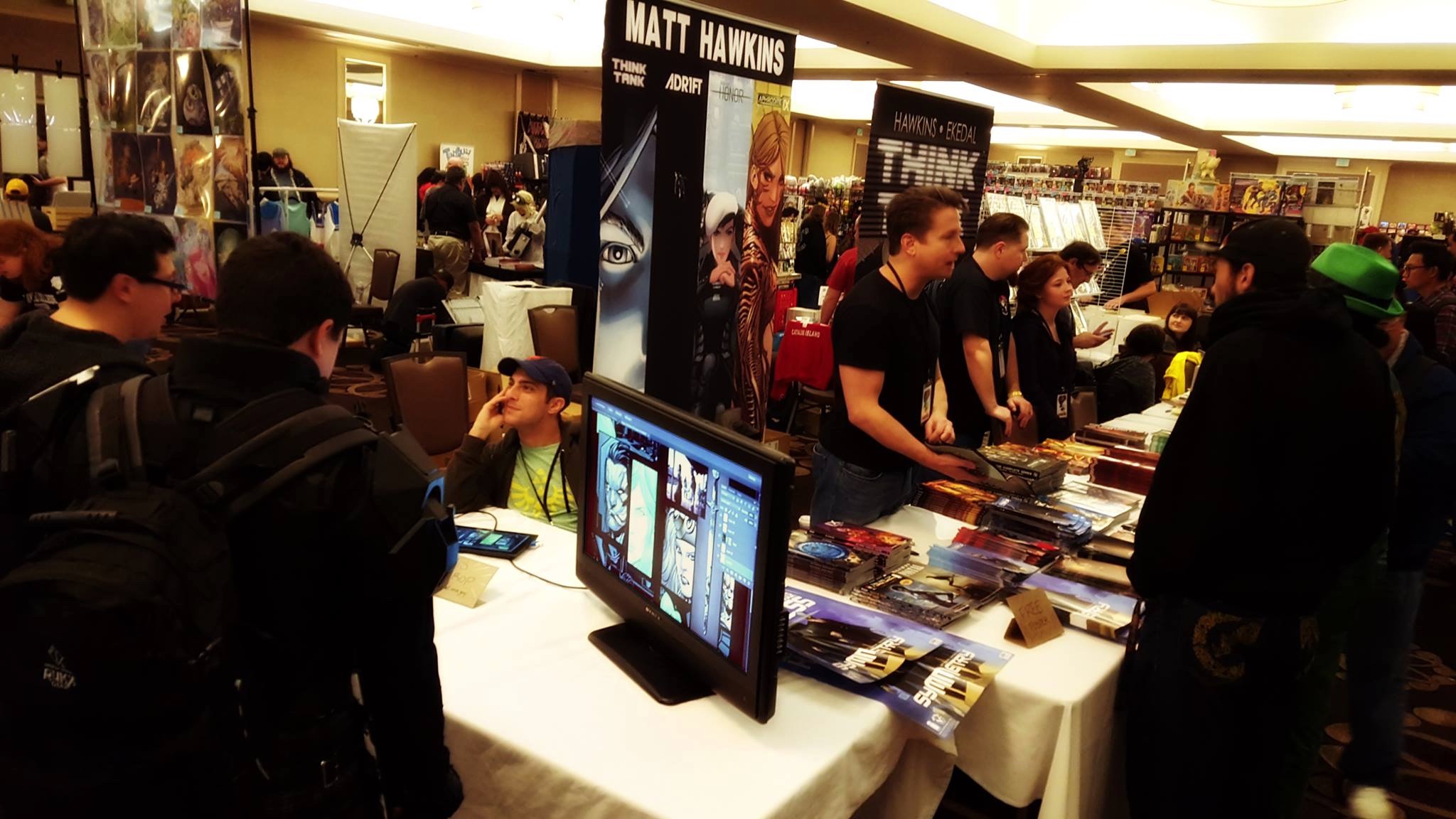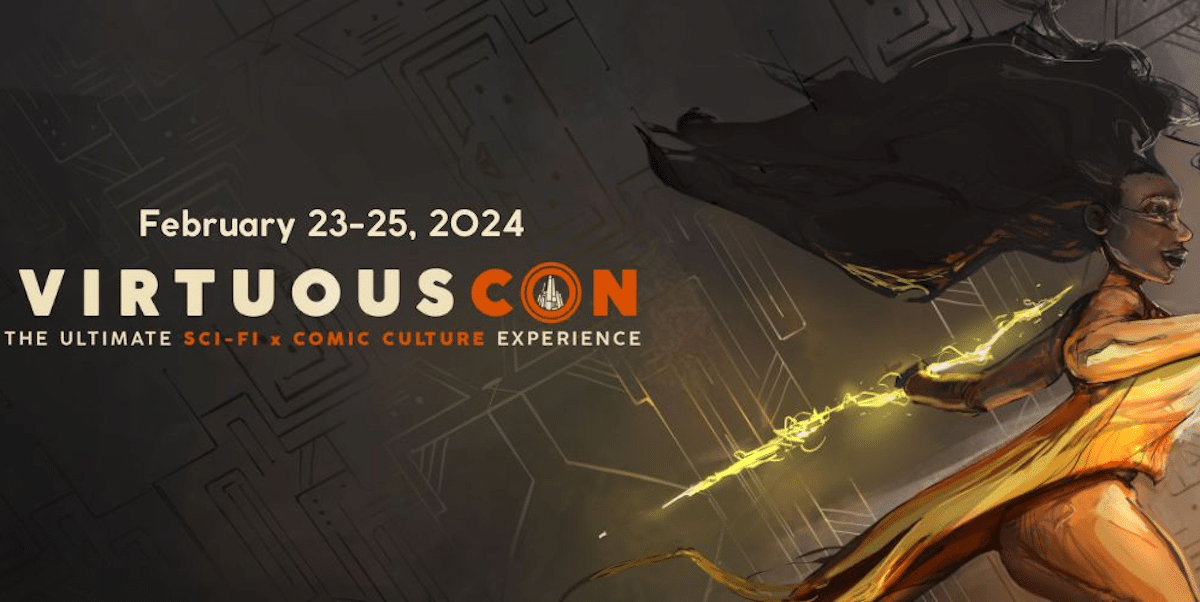
With convention season swinging in high gear with C2E2 this weekend, followed by WonderCon, MoCCA and ECCC, let’s review a little bit of convention exhibiting basics, shall we. With the flood of smaller shows, the economics of attending have to be examined closely. If you’re a writer, even more so.
Matt Hawkins is the President/COO of Top Cow Productions, as well as the writer on most of their books, and he hits a lot of smaller shows and in a series of FB posts he laid out some thoughts on the economics of going to shows. Of course, your milage may vary; some people may get cheaper booths in AA, some may drive, etc but the basic numbers are pretty simple and explain why doing a lot of shows is not really a break even proposition unless you can sell art. In the comments, Hawkins explains that he does a lot of shows for exposure to new audiences and territories:
So rough example of the cost of doing a smaller convention (like the ones I do as a one man band). Lot of factors will change this. Sometimes the promoter will give you a free table and on occasion they’ll pay for your airfare/hotel. There are also the costs of eating and drinking, but since you’d need to do that anyway I leave those out (although I could argue that you will spend more on the road than you would at home).
Approximate:
Table cost – $500
Airfare – $500
Hotel – $300
Shipment of books (even if you put them on the plane you have to pay now for the weight and paper is heavy) – $250
So $1,550 on the cheap side to set up. Artists will do sketches and commissions and can make a decent amount at these shows doing that. As a non-artist, you have to sell books. Now I see people sometimes mistakenly take the full value of what they sell, not factoring in the costs of the books themselves. So if you sell $2,000 worth of books, you aren’t making $450…the product itself costs money to make.
I sell a lot of trades at shows. That’s the majority of what I sell. The vast majority are $10 volume 1 trades. So again, for ease of showing the math let’s say these books have a $3 per unit cost to make (printing, etc).
So how many books do I need to sell to break even? I have to sell 221 trades over the weekend…to break even. This isn’t factoring either the possible sales tax and the merchant fees for using a credit card. Square takes what, 8%?
Also…this doesn’t factor in your time. Even at let’s say a $10/hour minimum wage you’re losing 4 days with travel, you will work more than eight hours a day but let’s look at opportunity cost loss. Four days at $80 is $320.
That’s another 45 trades to justify the time (and I value my time WAY more than $10 an hour, but this is an exercise to show in general).
And this is just me. Imagine bringing a bigger booth, people to man it, cost of promotion materials and you start to realize how expensive it is for companies to do these shows. I look at it as a marketing expense, so I’m generally okay breaking even at shows…but even that isn’t easy to do.
Conventions are important for creators and small publishers. It’s one of the few ways to find new readers in an area. But it’s not easy. I’d recommend that you keep an expense journal when you do these shows.
In a later post, Hawkins gave some tabling basics, although a lot of them are basic salesmanship techniques as well; if you aren’t a chatty Cathy like Hawkins, find someone who is.
1) If you aren’t good at talking to people, you’ll need to bring someone that is
2) Best opening is “hello” or “would you like a free ______”
3) Best sales are always in the final hour of the day so don’t leave early
4) Ask people what they like to read, let them tell you which of your books they’d be more interested in (what kind of movies do you like can be good too).
5) Have 10 second and 60 second pitches for each book. With the 60 second know which key pages of art to show.
6) Have a cheap entry level thing they can buy to try (or give for free)
7) Have expensive quality items for your hardcore fans
8) Have a variety of things. Some people like to choose.
9) When you leave your table leave a sign saying when you’ll be back. I do this and every time someone is waiting for me when I get back (at the time I indicate so don’t be late!)
10) Take credit cards. With the square register there is no reason not to. You’re missing out on sales when you don’t.
11) Hand a person talking to you a book to flip through
12) Smile
13) Make positive comments about their cosplay, kid, t-shirt and follow it up with a question. Where’d you get the shirt?
14) Plan your calories. You need to eat to keep your energy level up
15) Have a clear display with your name, best known property (ies), even a single banner behind you is enough.
16) Have something visible with your social media. I have a “fan card” I give out that has my name and social media on it. Also good to give people who ask for your business card that you don’t want having your email or phone #
17) Bring a small water bottle you can refill at the water fountain.
18) If you’re getting angry, annoyed or are dead on your feet…take a break. Go walk around a bit. Bring a sheet or something to cover your table and as said earlier put a sign, be back at 3:30 or whatever
19) Try and make people laugh. Try different things. Practice and come up with one liners that will make people smile.
20) Don’t be pushy. People come to comic conventions to chill. You can actively sell them without coming across as a used car salesman. And yes you have to “sell” most comic books don’t sell themselves.
Do you have some convention dos and don’ts to add to this?







As someone who does the programming side of things, #3 is definitely something to take into consideration. If you have an artist or author guest who has a strong table presence, don’t take them away from their table at a time when people will be shopping. If the con tries to schedule you then, ask to have it changed and explain why.
If the con has a preview night, especially with little programming happening, make sure you are ready to go and at your table when people are let in. For people who go to a lot of programming, a preview night may be the only significant amount of time they spend in the exhibitor hall.
Last year, I saw our local comic con schedule a writer/artist on a panel pretty much the entire evening on preview night so he had very little chance to be at his table. Definitely not something I would have done.
I find that if I offer to do nude sketches of comic book characters, they will pay me a large amount of money and then I don’t actually have to draw any comics.
When a friend drops by your table to chat, make him welcome but insist on serving customers while he is there; on the opposite side of things, when you visit your friend’s table, don’t block the front of the table, and do let him conduct business while you are there. If it gets busy, go for a walk and come back to talk to him later.
It’s perfectly acceptable to hire someone to watch over your booth. I was a booth sitter/babe for a bunch of webcomics back when they were booming (2006-09). It let the artists get away for a while, eat, smoke, pee, shop, or do a panel and keep their booth going.
The last point is a big one. Over agressive sales pitches are going to guarantee that I, while being polite, will thank them for their time and continue on my way. If you are fun to talk to I guarantee I will give your work a look see.
Maybe this is a no-brainer, but I’ll add this,
Size matters. You don’t need to be in the main exhibit area, with its high table costs, if you’re promoting a small product (example: A web comic, or a really small self-published one). Check the cons to see if there are different kinds of exhibit areas (or discounts for taking tables in awkward areas that don’t lend themselves to a full retail layout).
Some conventions, especially anime and non-comics-specific media cons, will often have “Artist Alley” type areas for independents, freelancers, webcomics, etc. that aren’t headliners. The tables won’t be in the main exhibit area, but in less formal settings. They often have very little in costs compared to a main room table, but similarly, very little in space. At one con I worked, there were webcomic teams selling paper compilations at a table next to some brothers that worked on a DC title, next to someone selling crafts, all of which were also selling sketches, autographed items they worked on, giving/selling autographs, etc. All of which would have not been economical if being done at an Exhibit Hall booth.
For that matter, if you’re going to be at one convention (even if just as an attendee), but are going to be a guest at another, and that second convention has a booth selling memberships (not uncommon at not-for-profit cons, as opposed to commercial ones), you might be able to “sit in” at the con’s booth, doing promotional stuff, selling or raffling a few items, and encouraging people to come see you at that other venue, where you’re going to be more of a headliner. (which could help their attendance and help you with sales at that later venue, especially with product that might be in the pipeline currently).
Save your big table expenditures for conventions where going big will actually make a difference.
Comments are closed.